Science is helping more premature babies survive, but for parents it's still a journey marked by fear, pain and joy.
Inside of what looks like a giant Ziploc bag filled with water, the hoof of a tiny lamb twitches. It’s pink, hairless, and barely resembles a baby sheep. But over four weeks, the little animal fattens up, opens it eyes and even grows a coat of white wool that now pushes at the sides of its plastic home. It’s a strange sight and it’s also ground-breaking science.
In a study published earlier this year, researchers at the Children’s Hospital in Philadelphia successfully put eight premature lamb foetuses in lab-made fluid sacks that closely resemble wombs and witnessed them live longer than any past attempt.
Animal testing is still in progress and, if all goes to plan, the wombs could start being trialled on prematurely born human babies within three to five years, potentially saving the lives of millions of fragile children.
There’s no question that the best place for any developing foetus is inside its mum and human foetuses need 40 weeks (9.2 months) to fully grow. A couple weeks either side doesn’t usually cause too much drama, however, babies who leave too early are at risk of serious health complications or death.
Leah Conte, a 28-year-old New Zealander living in the United States, remembers the first time she ever saw her baby girl Coralyn - Cora for short. Cora was lying inside an incubator with a maze of tubes and cords covering her tiny body. Leah was terrified of her.
“I was only allowed to touch her hand. She was so fragile, I didn’t believe she was going to live.”
Cora was born at a gestational age of 25 weeks, five days. She was more than 14 weeks premature and weighed 850 grams – less than two blocks of butter. The average birth weight is about 3.5kgs.
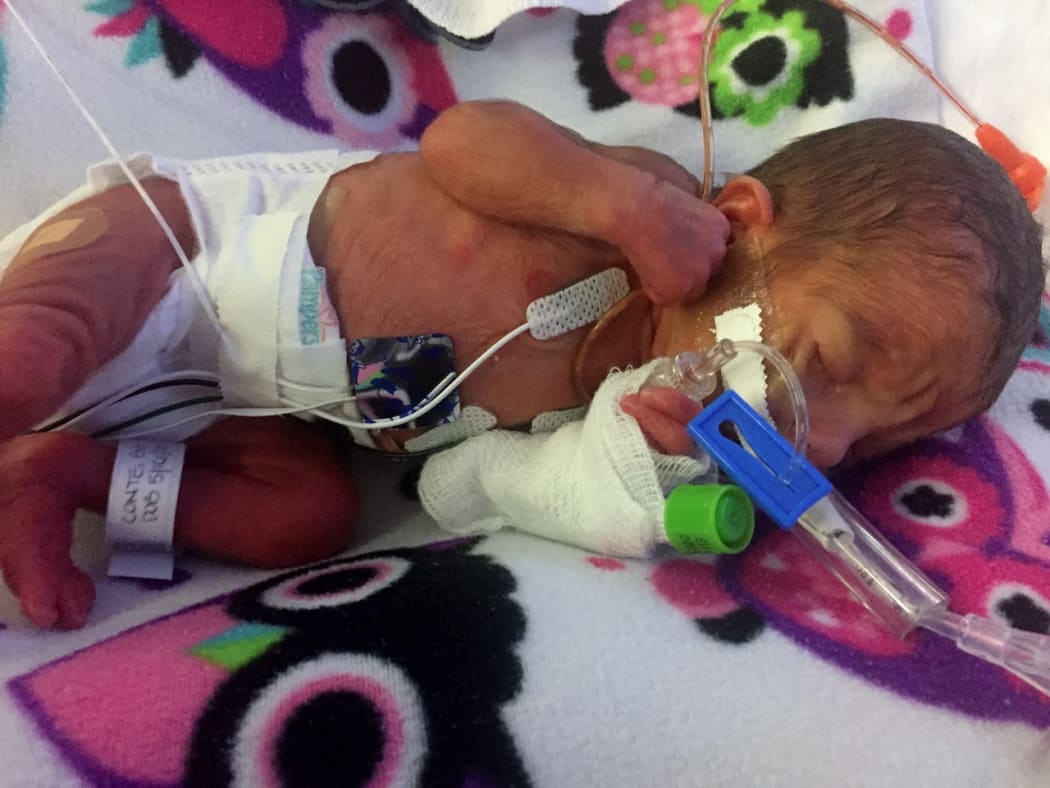
Four-day-old Coralyn Conte Photo: Supplied
Every year, about 15 million babies worldwide are born preterm (before 37 weeks). In New Zealand, approximately 10 percent of all babies are born prematurely – one every 90 minutes.
According to the World Health Organisation, preterm births were responsible for nearly 1 million deaths worldwide in 2015, making it the highest cause of infant mortality.
Babies born before 28 weeks are known as “extreme prems” and require immediate medical intervention; oxygen to help them breathe, feeding tubes to help them eat, drugs to keep their tiny hearts and lungs going and their brains developing. They have little muscle tone and their skin is wrinkled, paper-thin and often purple.
They’re at risk of cerebral palsy, lung disease, heart problems, and vision and hearing complications. Most will have developmental delays.
In almost all countries with reliable data, preterm birth rates are on the rise. There are no tests that can accurately predict who might have a preterm birth and the causes are not fully understood. However, risk factors include smoking, drinking or taking drugs during pregnancy. Pregnant teenagers and women over 35 are also at an increased risk of having a preterm baby.
IVF has also linked to preterm birth and recent studies have found that IVF babies are nearly twice as likely to be born early compared with those conceived naturally. But it’s still unclear if the actual treatment is to blame or the circumstances leading a mother to have fertility treatment.
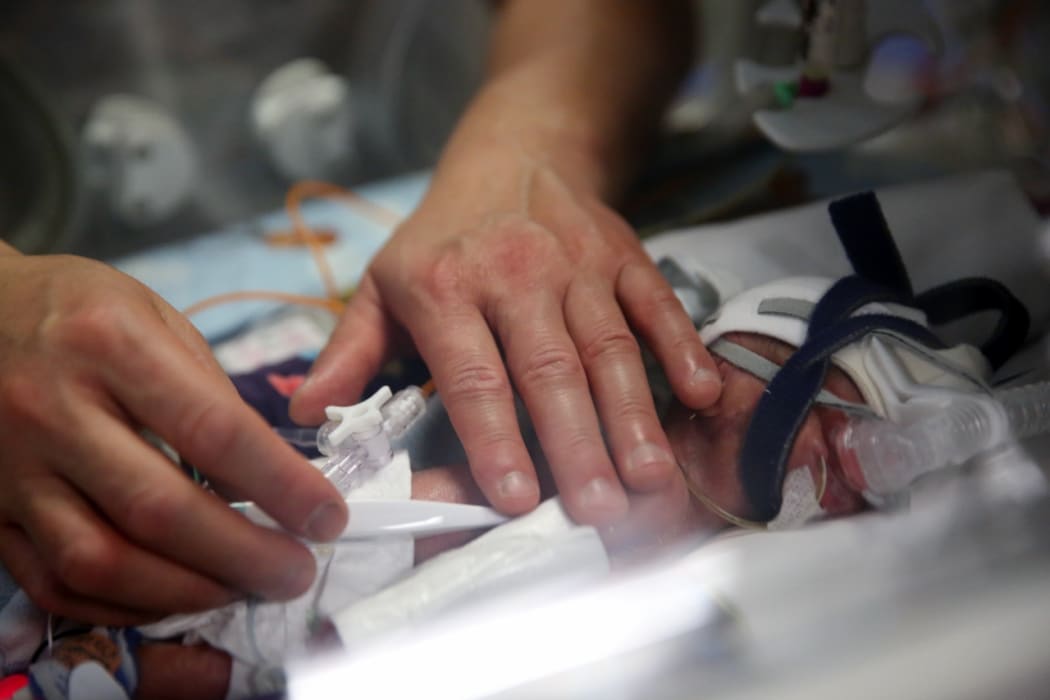
Father checking son's temperature at Wellington NICU Photo: Mava Enoka
Leah had no idea IVF was a risk factor. She and her husband Ben decided to try IVF after two years of failing to conceive naturally. Leah fell pregnant after the first round and was elated.
“It didn’t feel real because we had been talking about it and been involved in this process for so long that when it finally happened, I didn’t believe it.”
Despite brutal morning sickness (which, contrary to its name, can hit you at any time of the day) the pregnancy progressed normally until one morning when Leah woke up with abdominal cramps. They grew more painful over the day and by lunchtime, she couldn’t stand. She went to the bathroom and discovered she was bleeding heavily.
At the hospital, a midwife scanned Leah’s baby bump and delivered an unsettling verdict: “I can remember her saying, ‘I hope I’m not seeing what I think I’m seeing...’,” says Leah.
Cora’s umbilical cord had prolapsed, slipping through the cervix and into the birth canal and Leah showed signs of labour. By early afternoon, she was fully dilated. Doctors went to consult with specialists but before they could decide on what to do, Leah began haemorrhaging and was taken in for an emergency C-section.
“I remember I looked at Ben. I thought I was going to die. I thought Cora was going to die. I said to him ‘if anything happens …’ but he cut me off and said everything was going to be fine.”
Leah was less than six months pregnant. Apps that let parents-to-be compare the gestational age of foetuses to fruit and vegetables had Cora at the size of a cauliflower head.
When Leah came to after her surgery, her baby wasn’t with her. She was told Cora was alive but needed to be closely monitored. She was also told that because of how low surgeons had to cut to get Cora out, all future babies Leah would have would need to be delivered via C-section at 36 weeks. All her future children would be premature.
Leah was wheeled past Cora on the way to the recovery room, spending less than a minute with her fragile little girl. Soon after, her baby was taken to the Children’s Hospital of Philadelphia where neonatologists specialise in treating extreme prems. It’s the same hospital where the sheep in the artificial wombs are being trialled.
***
Dr Max Berry's job involves caring for babies that can fit in the palm of her hand. Without so much as a pause, the neonatologist and senior lecturer at Otago University can tell you the littlest baby she’s treated; 23 weeks, 420 grams. At the beginning of her career that would not have been possible.
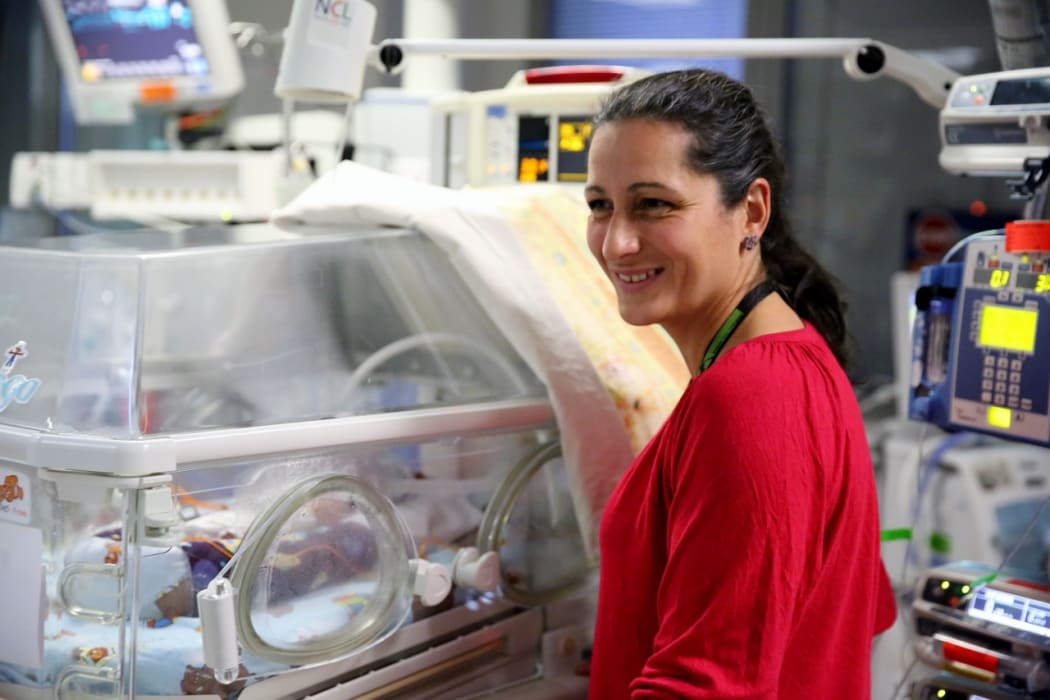
Dr Max Berry Photo: Mava Enoka
Strictly speaking, most doctors define the age of viability as being about 24 weeks of gestation. In the hands of experienced specialists, though, babies born slightly earlier may have a chance but the odds of survival are much lower. But how to care for a baby that early is never a simple decision and when faced with making that call, Dr Berry says the best option is not always aggressive medical intervention.
“Care might involve putting baby on a breathing machine or it might mean saying OK, baby is going to born alive and it’s going to have cuddles with mum and dad and we’re going to make sure it’s not in discomfort or distress. We accept that the end of that will be death in minutes or hours but that is still care.”
It costs over a thousand dollars a day and huge teams of medics to keep an extremely preterm baby alive. And the younger they’re born, the more likely they are to suffer lifelong disabilities.
“If you decide to treat a 23-weeker, are you disadvantaging 27, 28, 29-weekers by taking away resources that they would need?” says Dr Berry. “It’s not as simple as ‘we can do it so off we go’.”
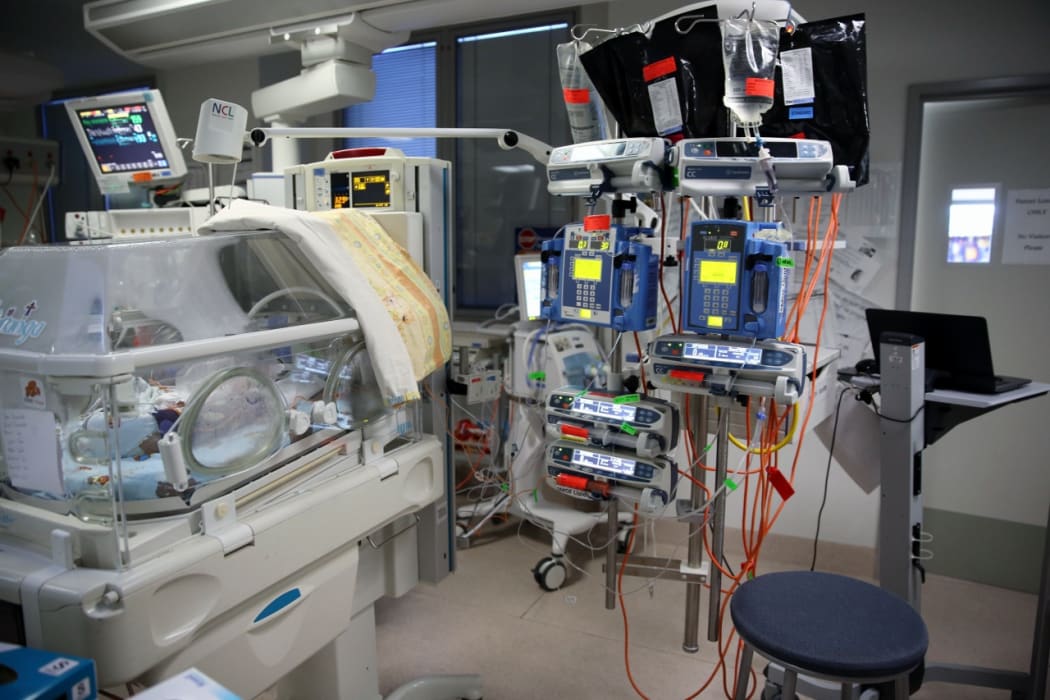
It costs over a thousand dollars a day and huge teams of medics to keep an extremely preterm baby alive. Photo: Mava Enoka
The ethics of attempting to keep very premature babies alive continues to be a hotly debated topic around the world. At the coalface, Dr Berry knows that the decision must be made together with the parents, making sure the burden of deciding their child’s fate doesn’t solely rest with them.
“It doesn’t stop being difficult. Every single family I’ve had to engage with in these sorts of discussions, it leaves a mark. It’s someone’s kid, it’s the most precious thing they’ve got.”
Dr Berry, who previously worked in the UK, says the quality of care in New Zealand is world class and we’re leading the way in research, too.
The humble sheep are to thank for another huge medical discovery; when a baby is at risk of premature delivery, doctors can give the mother steroids to help the unborn baby's lungs develop more quickly, reducing the risk of complications and death. It has saved countless lives, possibly even Cora’s since Leah had a steroid shot shortly before her surgery. The procedure was first trialled on sheep in New Zealand.
“The advent of steroids has been a huge innovation. That foetal sheep work – New Zealand-led medicine – is now the gold standard of care anywhere in the world,” says Dr Berry.
***
Born at just 22 weeks, Abbey and Julian Vares knew their twins could not have lived – not even with every medical intervention possible. In fact, the Christchurch couple are grateful their twins weren’t born a week or so later, where they may have been kept alive but suffered debilitating, lifelong disabilities.
The journey to parenthood has been unimaginably painful for Abbey and Julian. The couple lost their first baby in an early miscarriage but as soon as they could, they tried again.
“We got pregnant straight away which was so exciting. Because we were so anxious after the miscarriage we got a lot of scans and so we found out at six weeks that we were having twins. It was both terrifying and exciting,” says Abbey.

“It’s not something people like to talk about but it’s actually a really pervasive issue.” Photo: Sharon Thompson
Abbey was a healthy 27-year-old and the pair took comfort in knowing they had what are considered the “safest twins”. Dizygotic or fraternal twins develop from two different eggs. Each baby is in its own amniotic sacks, they have their own placentas, their own blood supplies. Just a pair of siblings growing together side by side.
But 21 weeks and five days into the pregnancy, things took a turn.
At lunchtime on a sunny Saturday, Abbey called her midwife about a little bleeding though she wasn’t particularly worried. Light bleeding is relatively normal in pregnancy but, erring on the safe side, her midwife suggested she pop into hospital for a check.
Abbey already had a big bump – in fact bellies of women carrying twins measure about 6-10 weeks ahead of women with just one. The couple had shortlisted names, started collecting baby clothes, and even found a new, bigger home for their family. Everyone around them was excited about the twins.
“I remember that moment when everything changed,” says Julian. “The doctor had walked into the room quite casual, just chatting about what we’d been doing that day, and then his face dropped. You could feel the mood in the room change to something quite serious.”
After examining Abbey, doctors could see she was going into labour. Abbey wasn’t in any pain and the reasons were unclear. She was given drugs to slow it down and the couple remained optimistic that they could allude labour long enough for the twins to be born a month down the track.
Twins are often smaller than single babies, so if born prematurely they are at higher risk of complications. Abbey hoped that if she just didn’t move, the twins would be okay. But by 6 o’clock the next day, her labour kicked into full gear.
“The doctors told us there wasn’t anything they could do to stop it. We were going to have the twins tonight,” says Julian. “We knew what 22 weeks meant.”
Their twins weren’t going to survive and Julian’s head rushed with questions about how his children would look and how long they would live. “I was fixated with what was going to come out.”
Abbey became pragmatic, preparing for the mammoth task of birthing her twins. Prior to this moment, she hadn’t given labour a second of thought except that she wanted to listen to Aretha Franklin.
“It was kind of a strange feeling. Part of me was thinking ‘oh my god, I’m about to give birth to my babies and I get to see them’ and it was exciting. At the same time, knew they were not going to live through this,” she says.
Preterm labour doesn’t necessarily mean less pain. Abbey endured contraction after contraction for about five hours before her twins were born. Arlo came first. A little boy with his mum’s delicate features. Julian held him.
“He just looked like a little baby. Five fingers, five toes, a little penis. I guess I wasn’t expecting them to just look like babies,” he says.
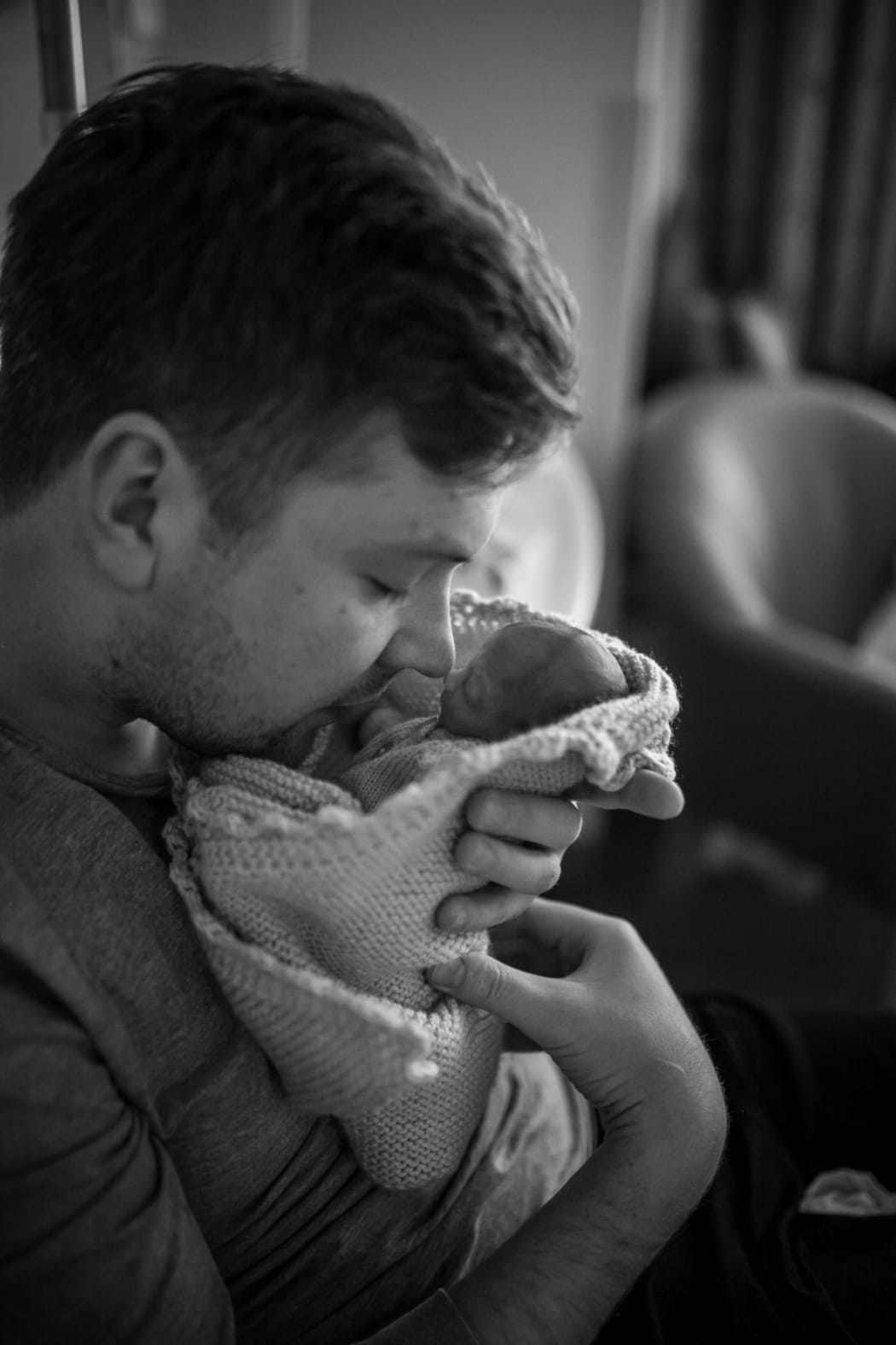
Julian and Arlo Photo: Sharon Thompson
Arlo made little squeaks and chest gently moved up and down. He was alive in his dad’s arms for about five minutes before he died. Next came Riyo. She was born about half-an-hour after her brother in a fully intact amniotic sack, wriggling around in her warm, watery home.
“It was amazing, I wish I’d gotten a photo of it,” says Abbey.
Riyo was slightly smaller than Arlo. She went straight into her mother’s arms. They spent time cuddling their babies in the garden room – a special suite at Christchurch Women’s Hospital for families whose babies aren’t going to live. It’s designed to make the worst time in the world as comfortable as possible equipped with everything they need.
“It’s like a hotel suite with a double bed and things. I know it sounds weird but there was also a small fridge for the twins,” says Julian.
It’s an uncomfortable reality but babies that die must be kept cool to stop their tiny bodies from decomposing. Arlo and Riyo were placed in a basket with a blanket over them then put in the fridge overnight.
The next morning, family came to visit, professional photos were taken, and ink prints of their miniature feet and hands when done – special rituals, all free, organised by the hospital to help families create keepsakes of their baby’s short lives.
The next evening, Julian and Abbey prepared to go home. “The hardest moment of the whole thing was leaving them in that room. I remember when we got in the car, we had this urge to go back. I was worried that I hadn’t said goodbye to them in a meaningful enough way,” says Julian.
“I can think about everything else but that car ride home...I just can’t,” says Abbey.
Arlo and Riyo’s ashes are scattered under a weeping cherry tree. Their tiny footprints hang on the fridge in Abbey and Julian’s house - the same house they had found to bring the twins home to.
“This whole experience made me aware of how much tragedy there is around having a baby and how big the community is of people who have been through something like this,” says Julian. “It’s not something people like to talk about but it’s actually a really pervasive issue.”
Abbey desperately wanted to talk about her twins but found most people ignored her completely. She wished someone would have congratulated her on getting through the labour, asked their names and checked to see how she was doing.
“It took me a couple months to understand that it wasn’t that they didn’t care; it’s that this is too big of a tragedy and they don’t know what to say. You miss out on all of that new baby stuff which you actually need.”
The pair later found out that Abbey had suffered a placental abruption; a relatively rare condition that happens in about one in every 150 pregnancies. No one knows for sure what causes most cases of placental abruption but it is more common in women carrying multiples.
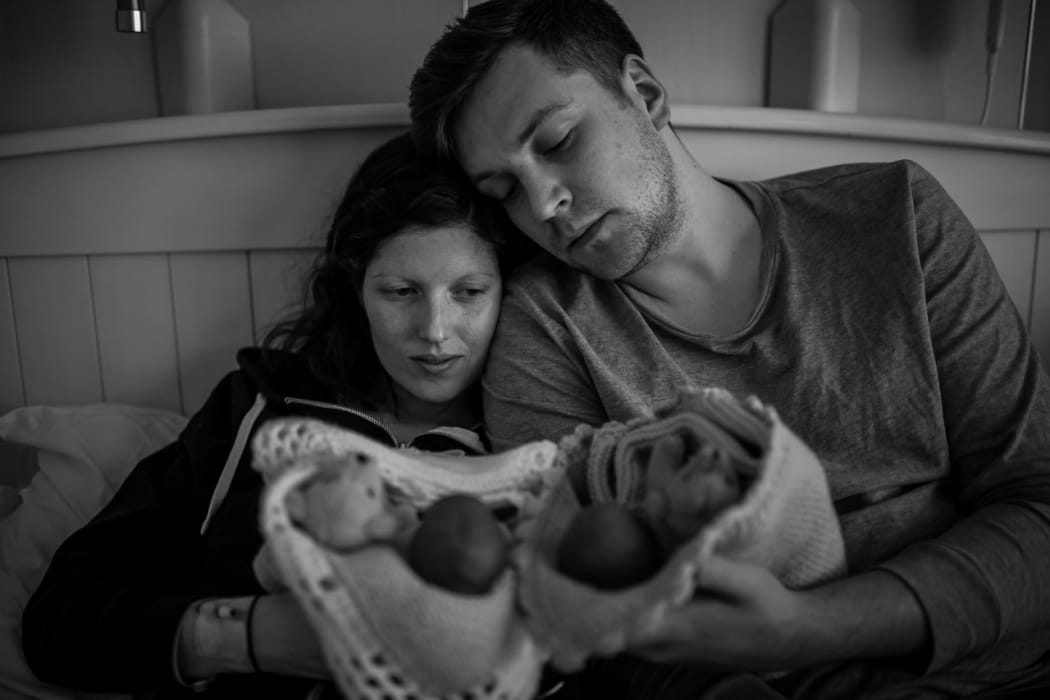
Abbey, Julian, Riyo and Arlo Photo: Sharon Thompson
Doctors suspect Leah had a placental abruption, too but Cora was far along enough to be kept alive.
The hospital in Philadelphia where Cora was kept was over an hour away from where Leah lived. Leah travelled there every day but she didn’t feel like a mother for several weeks.
“At first, I felt like I hated her. Parenting a baby was always going to be difficult and parenting a premature baby was too much and I was so resentful that this had happened. I felt so robbed of the experience I thought I was going to have and then I felt so guilty and wrong for feeling those feelings.”
About 25 percent of very extreme prems develop serious lasting disabilities, and up to half may have milder problems, such as learning and behavioural problems. Most have developmental delays.
It took time for Leah to adjust. The more she held Cora and saw her grow, the more she felt connected. Watching her feed on breast milk through a tiny tube with was also a huge help.
“It was a really empowering experience for me because it gave me purpose through it all. I had a commitment to pump six, seven or eight times a day and that was directly supporting Cora’s survival.”
Most babies born as early as Cora are kept in hospital until they reach about 40-45 weeks of their gestational age. However, Cora thrived quicker than most. Over 10 weeks she learnt to breathe, feed and wake on her own. Last week, Leah announced that she was coming come at just 37 weeks her gestational age. A tremendous victory.
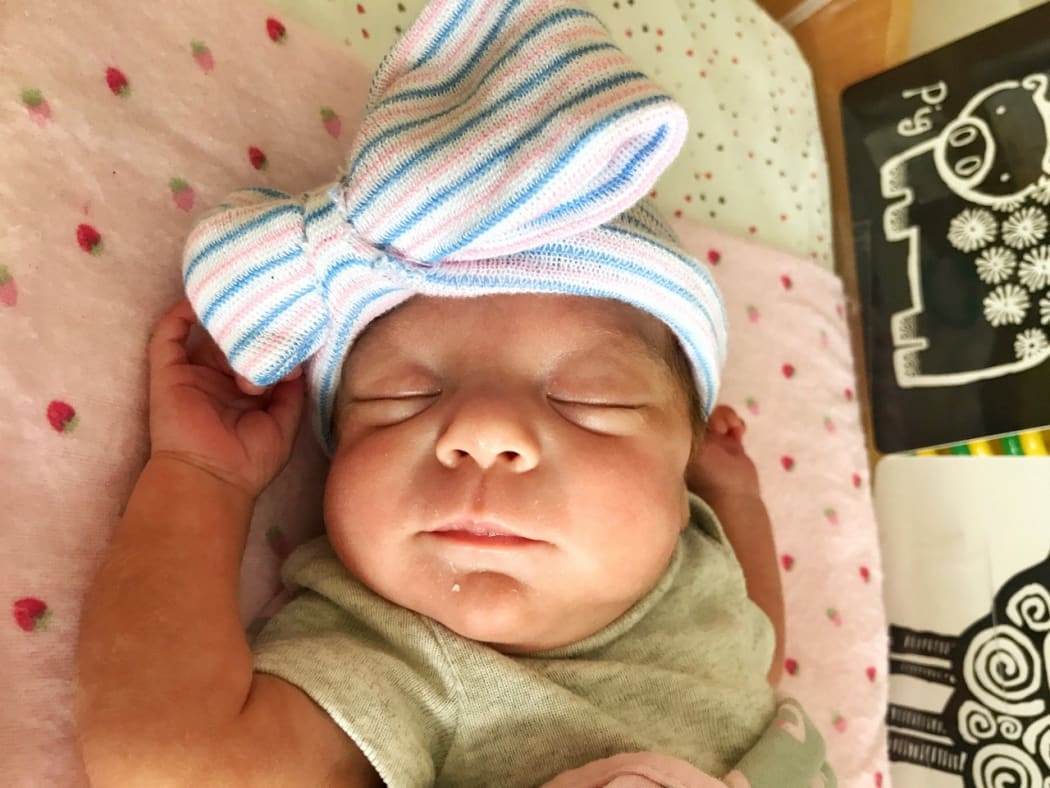
Cora shortly before leaving hospital Photo: Supplied
For Abbey and Julian, joy came in the form of a little boy called Remy - their healthy son who was born in June of this year – almost year to the day they lost their twins. “Some people, after going through what we did, would never want to be pregnant again and others will do everything they can to have another baby,” says Abbey. “It helped us move on and move forward.”
For more information on premature babies and the work being done to support them and their families, visit The Neonatal Trust website.

